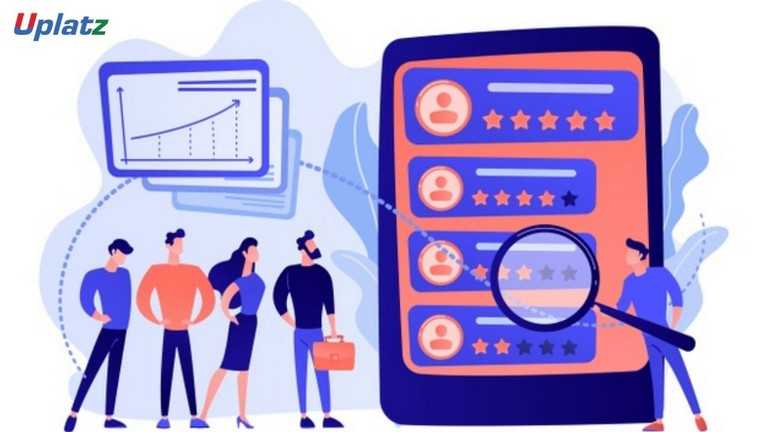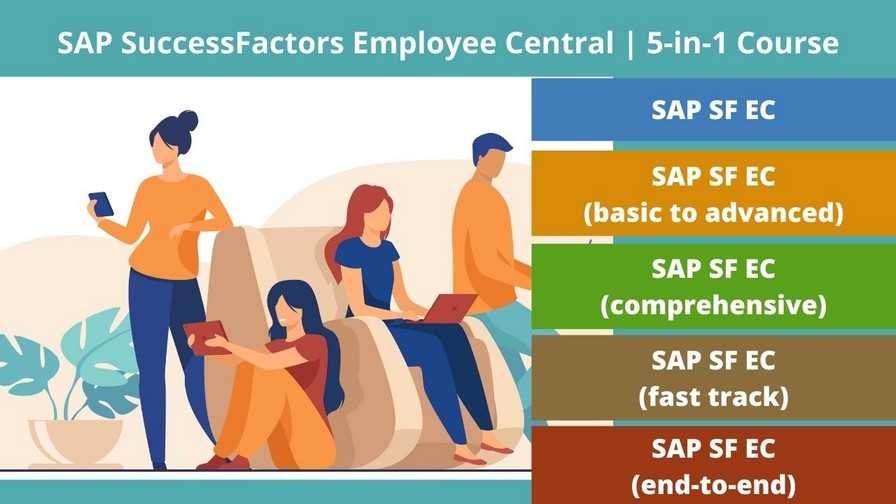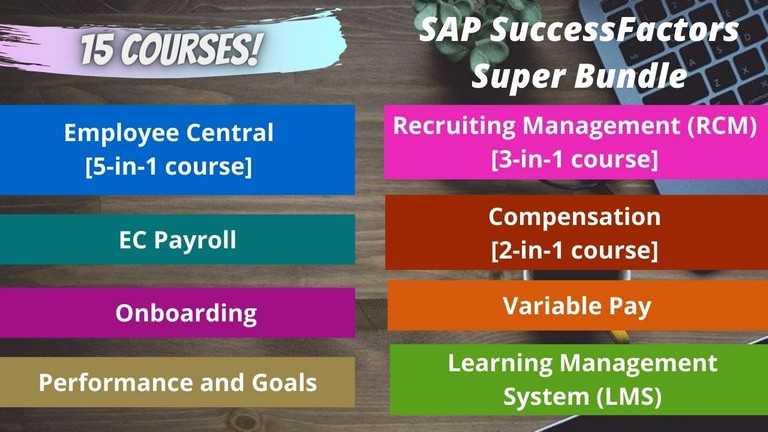SAP SuccessFactors PMGM (fast track)
Learn about Learning Management System (LMS) & aligning with the entire strategic plan for career development, pay planning, succession planning etc. Price Match Guarantee
Full Lifetime Access
Access on any Device
Technical Support
Secure Checkout
Course Completion Certificate
Price Match Guarantee
Full Lifetime Access
Access on any Device
Technical Support
Secure Checkout
Course Completion Certificate
 88% Started a new career
BUY THIS COURSE (
88% Started a new career
BUY THIS COURSE (GBP 12 GBP 29 )-
 94% Got a pay increase and promotion
94% Got a pay increase and promotion
Students also bought -
-

- Bundle Course - SAP SuccessFactors Recruiting and Onboarding
- 65 Hours
- GBP 22
- 790 Learners
-

- Bundle Multi (5-in-1) - SAP SuccessFactors Employee Central
- 100 Hours
- GBP 22
- 1930 Learners
-

- Bundle Super - SAP SuccessFactors
- 250 Hours
- GBP 22
- 846 Learners

SAP SuccessFactors PMGM (Performance and Goal Management) is a cloud solution that will streamline the Performance Management and Goals process when fully implemented. SAP
SF PMGM helps align employee goals to overall business targets, conduct accurate and bias-free employee evaluations, recognize top talent – and continuously improve workforce performance. The steps involved in SF PMGM module implementation and management are: Define your Rating Scale, Finalize your Route Map, Create Goal Plan Template, Assign Goals to your Goal Plan template, Create PM Template, Link GM plan Template to PM form Template, Rating Scale and Route Map to PM Form Template, Launch the PM form template, Do Employee Review, Manager Review, Completion.
Advantages of SAP SuccessFactors Performance and Goals module are:
1) It will improve the performance review process by integrating seamlessly with Learning Management System as well as the Onboarding module (planned) and aligns with the overall strategic plan for career development, compensation planning and succession planning initiatives.
2) Improved productivity as it aligns employees to corporate goals, increase daily engagement, improve performance accountability and more efficient review process.
3) High Retention as it creates meaningful feedback, understand development needs and provide fair compensation adjustments.
Key responsibilities of SAP SF PMGM Consultant are:
1) Lead and advice business process improvement on SAP Successfactors enablement initiatives
2) Interact with clients to understand the business requirements to conclude blueprint, configuration, testing, migration, support, and continuous enhancements
3) Perform detailed analysis of complex business process requirements
4) Manage the SAP Successfactors projects to ensure timely delivery
5) Understand the technology landscape and how it affects the clients’ area of the business; trends associated with the technology; functional area and industries and the value propositions for clients
This SAP SuccessFactors PMGM course by Uplatz will help you enhance the performance review process by integrating smoothly with LMS and aligning with the entire strategic plan for career development, pay planning, and succession planning activities. It will contribute to increased productivity by aligning employees with corporate goals, increasing daily engagement, improving performance accountability, and facilitating the review process. It will also contribute to high retention by providing meaningful feedback, understanding development needs, and providing fair compensation adjustments.
• Analyze Scope of this training and expectation in terms of deliverables
• Learn Introduction to HCM
• What is Success Factor
• Intro to mastery PMGM ( Performance and Goal Management ): Talent Management
• Learn Configuration of Performance Template
• Learn Configuration of Goal Template
• Learn Configuration of Routing Maps
• Learning Management
• Setting up of Items / Curriculum/ category
1. How do you integrate Employee Central with other SuccessFactors Products?
Employee Central integrates internal with other SuccessFactors products through HRIS Sync.
2. How do you integrate Employee Central externally with other products?
There is a cloud-based integration platform available for external integration.
3. What does the Succession Data Model contain?
The Employee Records are contained in the Succession Data Model. The succession data mode configures the fields that will appear in the Employee’s Personal Information (outside of work) Employment Information (inside of work).
4. What is configured in the Country -Specific Succession Data Model?
Address formats, country-specific fields, and international standards are set in the country-spe, succession data model.
5. What does the Corporate Data Model define?
Foundation Objects and their relationships are defined in the corporate data Model. Foundation, Objects are also called Foundation Tables. They include Organization, Job and Pay.
6. What is defined in the Country -Specific Corporate Data Model?
Here foundation object fields for a separate country are defined.
7. What is the propagation data model used for?
HRIS Propagation Data Model is used for the Auto Population from Foundation Tables
8. What other two data models are used?
Data Model Workflow Rules Data Model, Event and Event Derivation Rules Data Model
9. How many data models are there in Employee Central?
7
10. How do you masked sensible data in a field?
Set the attribute pii=” true”
11. How do you set a field so the user can edit it?
Set the attribute visible=” both”
12. How do you make a field be required to be filled?
Set the attribute required=” true”
13. What is a DTD?
Document Type Definition of the data model
My vision is to build a truly integrated HR in the cloud. A truly integrated HR is the key enabler for organizations to maximize their business outcomes.
14. Why are they called ‘Success Factors’?
Because they are behaviors that lead to successful performance in the job.
15. Why are there three levels within the framework?
They describe a range of different types of behavior that are relevant to a range of different job roles. However, the levels are not hierarchical.
16. What are the levels linked to job grades?
No. Just because someone is on a certain job grade, it doesn’t rule out any of the levels. However, if a job is more senior you would expect to see more of the university-level behaviors.
17. What are they going to apply to academic staff as well?
There is a similar framework for Strategic Leaders Framework and one for researchers which have been based on Success Factors. The idea going forward is to have something similar for all staff groups in the university.
18. Will Success Factors be used to ‘get rid of people?
That is not why they have been developed. They are used to develop individuals. However, if the behavior (s) is essential to the job and there continues to be no development then it could become a performance issue.
19. What if the employee doesn’t agree with the Success Factors that their manager has chosen?
The manager uses the job analysis information to determine the Success Factor for the role in conjunction with discussions with the individual. However, it is ultimately the manager’s decision.
20. Once a Success Factor has been chosen for a role can it be changed?
Yes; it depends on the requirements/needs of the role at any point. It is fluid and therefore may change year on year.
21. If a Success Factor is changed during the year how do you know what you will be reviewed against at the next PDR?
Through dialogue/communication between the manager and the individual. The change can also be flagged on the PDR form.
22. Do you have to choose the same level (e.g. self) for all the Success Factors identified?
No. However, it may be that they tend towards one level.
23. If Success Factors are important – how do you pick the right ones?
Use the job analysis information and advice from your HRO and other managers with the same roles to determine the 3-5 core success factors. It will become easier with practice.
24. What if the Success Factor for a role is what the job requires as a technical output e.g. communicating for a careers’ adviser?
There may be a ‘technical’ requirement to do that but success factors are about ‘how’ the job is done / the behaviors required in carrying out their job.
25. If an individual achieves all the Success Factors does that mean they will get promoted/get more pay?
Not directly. Obviously, the more successful the individual is in their role / can demonstrate effective job performance / demonstrates additional behaviors, then this can be used as evidence in any job application or pay review case.
26. What support will I have in using the Success Factors?
Managers will receive training; Success Factor documentation and guidance on its use will be available on the HR website; members of the HR team will be able to provide advice.
27. Won’t the choice of the Success Factors be too subjective?
There is always an element of subjectivity in any process dealing with people. However, Success Factors are objective standards or benchmarks with good examples.
28. How much evidence in assessing Success Factors will we be expected to produce?
Look over the previous 12 months for examples and pick out the 2 or 3 which demonstrate the Success Factors the most.
29. Won’t the assessment of Success Factors take too long?
Initially, making the assessment may take some time because it is a new process and we’re dealing with new concepts but it is worthwhile for the benefits they bring.









